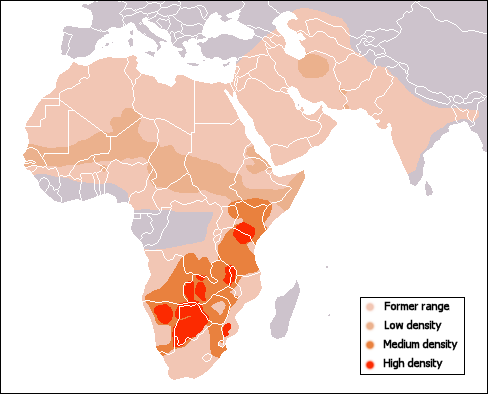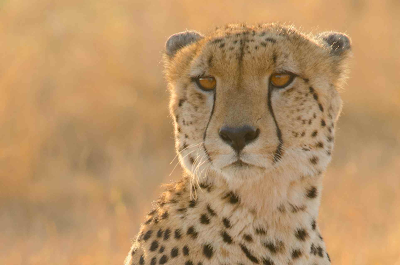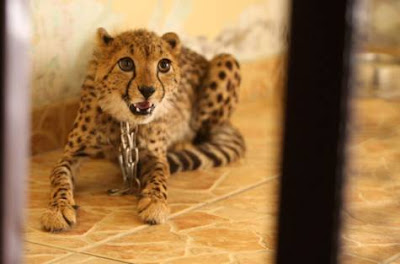After receiving the brief we were each given a randomly selected animal on which we would base our research, mine was the 'Cheetah'.
I started my research by using internet resources to research into some basic facts about the cheetah, I used reliable sources such as 'National Geographic' to ensure that these facts were accurate.
GENERAL INFORMATION
Moreover, I also collected information and images from a book called the 'National Geographic Book Of Mammals', inside the book was a collection of pages with educational cheetah information and images.
The cheetah is most famous because of its speed, and holds the prestigious title of fastest land mammal. The nimble cat can explode into a sprint that reaches up to 63mph to catch its prey. As I researched further into the cheeta and its running capabilities, I discovered that every part of the cheetahs sleek body is designed so that it can run at high speeds.
Below is a selection of research material relating to the cheetahs speed.
Below is a selection of research material relating to the cheetahs speed.
This image is taken from a magazine spread informing people about the speed of the cat. The designers used 3d imaging programs to create the x-ray image of the cheetah, follow the link to see the interesting design process.
This informative gif was created by Jacob O'Neal, it educates the audience about all aspects of the Cheetahs anatomy, using infographics to engage the audience. The piece has inspired me to look at infographics as a way of presenting my information.
Another basic infographic illustrating the speed of a cheetah against other fast animals.
I also collected a series of images that could be used in my article should I do it on the cheetahs athletic capability. Unfortunately, I do not have the access or resources to collect my own cheetah imagery for the spread. So instead I will collect images from the internet, note the photographers name under the images and reference them on my blog.
Moreover, I also reviewed some informative videos about the cheeta, watching these made it apparent that every feature of the cheetahs body has been designed to help it run faster. It is clear that the most definitive aspect of the animal is its speed, and how its body is perfectly adapted to reach these high speeds.
Finally, I have listed a collection of informative websites regarding the speed of a cheetah.
http://www.helium.com/items/2370463-study-of-muscle-fibres-reveal-cheetahs-speed-secrets
http://jacoboneal.com/cheetah/cheetah.gif
http://animals.nationalgeographic.co.uk/animals/mammals/cheetah/
http://news.softpedia.com/news/Why-Cheetah-is-the-Fastest-Land-Animal-69322.shtml
EXTINCTION
The cheetah is famous for its speed and agility, however people often over look the fact that the cat is almost extinct.
"In 1900, there were over 100,000 cheetahs across their historic range. Today, an estimated 9,000 to 12,000 cheetahs remain in the wild in Africa. In Iran, there are around 200 cheetahs living in small isolated populations."
http://www.defenders.org/cheetah/basic-facts
In their prime the cheetah could be found throughout most of Africa and India (as shown in the example below) they now only reside in parts of central and southwestern Africa and a small part of Iran.

The cheetahs survival is balanced on a knifes edge, it is hard enough surviving the harsh conditions of the wilderness, but cheetahs are also faced with poachers who hunt them for their fur and farmers who shoot them in fear for their livestock.

Hunting cheetahs used to be a common practice in India and Africa.

Moreover, in India around the 1930's tame cheetahs were used by Indian Royalty to hunt gazelle.
"Cheetahs remain highly fashionable in Saudi Arabia and the Gulf states, where a cub can fetch upwards of $10,000. “A rich, young man buys himself a cheetah to go with his sports car,” says Mordecai Ogada, a Kenyan wildlife biologist who has studied cheetah-human relationships and wildlife trafficking. “It’s typically a new-money thing nowadays.”
http://ngm.nationalgeographic.com/2012/11/cheetahs/smith-text


MAGAZINES
Furthermore, as the outcome will be taking the form of a magazine spread I have briefly researched into some magazine spreads. I have focused on wildlife magazines as they are relevant to the content of my outcome. Moreover, I also want to examine what design choices the designers have made to make the spread relevant to the content, focusing on typography and the use of imagery and illustration.
Furthermore, as the outcome will be taking the form of a magazine spread I have briefly researched into some magazine spreads. I have focused on wildlife magazines as they are relevant to the content of my outcome. Moreover, I also want to examine what design choices the designers have made to make the spread relevant to the content, focusing on typography and the use of imagery and illustration.
The brief states that we have to include three images, so creating a simple spread with one background image is not possible. I could place images on top of the large background image, but this would make the composition look too busy and unbalanced.
Therefore, I also researched into magazine layouts that use more than one background image, I tried to look for spreads that had a good balanced of text and image. I used a book called 'The Art Directors' Handbook of Professional Magazine Design - Classic Techniques and Inspirational Approaches' and is published by Thames and Hudson.
Two collum grid used for the text, two small images have been placed above the text leaving space for large image.
Two collum grid used for the text, two small images have been placed above the text leaving space for large image.
Here, the pictures form the background of the article, due to the dark tones of the images the white text is legible.
This double page spread mirrors the text and image on opposing pages to create balance.
Moreover, in the double page spread the images and text are presented on opposing pages. I think that this takes the audiences focus away from the text.
Finally, these double page spreads focus is on the imagery as it dominates most of the composition. The text is composed using singular columns that have been sized so they are square with the edge of the image.
IMAGES
Last summer I went on a trip to Chester Zoo with a few friends. While there one image was taken of the cheetahs lounging in the shade.
However, I will undoubtably be using my own photographic imagery within my design. As I have no access, time or money to travel to the zoo to collect primary imagers, I will have to collect a range of internet based images.
Unfortunately, I don't have the resources to collect my own cheetah imagery therefore I will have to find some on the internet.
When selecting images from the internet I will change the search settings so that it only brings up pictures that are 4MP, if I decide to use a background image that spans the whole page this will ensure that the image is high enough quality.
When selecting images I will double check to ensure that they are high quality, and are relevant to the content of my article.
http://phototc.com/public/uploads/tours/pax_photo_gallery/Tanz_cheetahs_Andrew_Lerman_photo_tour.jpg
Moreover, the brief states that a minimum of three images must be used, so I also collected a range of smaller images to be used within the article. I will find pictures that showed the majestic animal at its prime, showing the audience its beauty. This will cause people to feel empathetic when reading the shocking content of the article.
Additionally, it is important to have a wide range of quality images. As a designer I will be focusing on the layout, type and image. The images used will need to be relevant to the context of the article.
http://photography.nationalgeographic.com/photography/photo-of-the-day/cheetah-mother-cubs-tanzania/
I also collected a range of imagery relating to one of the shocking storys I discovered when collecting my research into cheetah extinction.
A young cheetah is spotted riding around in its owners Land rover - Saudi Arabia
http://intlxpatr.wordpress.com/2009/12/05/round-2-why-you-should-always-carry-your-camera-in-doha/
A cheetah is executed after it was seen walking down the street in Saudi Arabia.
A nine month old cheetah is rescued from Adu Dhabi street. These images all work as a set as they are photos of the same cheetah.
A nine month old cheetah is rescued from Adu Dhabi street.
http://www.greenprophet.com/2011/09/wild-animal-pets-gulf/
A cheetah rides in a Land Rover with its owner.
Pet cheetah on a leash.
A young cheetah in the back of its owners car.
Moreover, after reviewing these images I realized most of them were useless due to their resolution. Therefore, I had to find three new images. Unfortunately, I couldn't find images that worked as a set, so instead I collected a set of images that showed

I used this image to represent what the Cheetahs would look like being trained.
I used this image to show Chettah cubs in captivity.
Finally, below is the list of websites used to help write the article.
- http://ngm.nationalgeographic.com/2012/11/cheetahs/smith-text
- http://bigcatrescue.org/qatar-growing-number-of-cheetahs-kept-as-pets/
- http://news.kuwaittimes.net/2012/10/30/cheetahs-trade-a-fast-rising-business-in-kuwait/







.jpg)
.jpg)
.jpg)
.jpg)






























































No comments:
Post a Comment